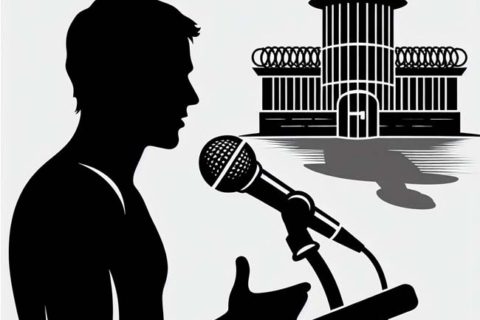Have you heard about the Stanford Prison Experiment? It is a social psychology study where students of college play a role as prisoners or guards in a simulated prison environment, cited from the Britannica. It took place in August 1971 at Stanford University. This experiment was funded by the U.S. Office of Naval Research and the leader of the research team was Philip Zimbardo, Stanford University psychology professor. How did this experiment go? Sourced from Simply Sociology, you are able to read the summary below.
The Participants of the Experiment
The experiment was allowed by the university and then the advertisement was posted in the Stanford Daily and the Palo Alto Times. There were 75 men who applied, but then only 24 applicants were chosen. People who had psychological impairments, criminal backgrounds or medical issues were not included in this experiment. The chosen men agreed to be included in the experiment for 14 days and they got $15 each day.

The participants were divided into 2 groups randomly where half of them became guards and the others became prisoners.
The Setting of the Experiment
This experiment took place in a 35ft section of Stanford’s psychology building’s basement. At the entrance, there were established walls and also the cell wall for hindering observation. There were small prison cells where each of them was six by nine feet. Each cell could hold up to 3 prisoners.
For each prisoner, there was a pillow, a mattress, and a sheet. The cells were also set not to be bright. A bigger room was provided for the warden and the guards. Besides, there was also a corridor that connected the yard and a solitary confinement closet.
The Way the Experiment Work
In this experiment, the guards had to operate in teams that consisted of 3 men. They did it for 8-hour shifts. If the shift had been done, they were able to go home. The guards were given instructions not to withhold drink or food dorm or physically injure the prisoners. However, they were able to humiliate the prisoners with the aim to make the prisoners obedient and helpless. For example, the prisoners were not called by their name, but by their number.
The guards were also completed with khaki shirts and pants the same as the real prison guards. They were also given mirrored sunglasses to prevent eye contact and to make them anonymous. As the person who was managing the experiment, Zimbardo acted as the supervisor of the guards.
The inmates were firstly arrested in their homes and then they were taken to the police office. Then, they were photographed and fingerprinted. And then, their eyes were covered and taken to the basement of Stanford’s psychology building which had been set as a prison.
In the prison, they were unclothed and deloused. They were also given uniforms and beds. Each of them had a locked chain that tied an ankle. Not only that, a tight cap was also given. On their clothing, they had their ID numbers.
The Result of the Experiment
The prisoners and the guards stayed there. And then, when the time showed 2.30 am, there was a whistle sound that awakened the prisoners.
The prisoners acted as if they were real prisoners. Some tasks and orders were also given to them and even the prisoners were harassed. Push-up was one of the physical punishments that they did. By giving the punishments, it gave them dehumanizing effects. On the first day, everything was relatively serene.
In the following day, the prisoners tore their ID numbers and they set up their beds against the cell doors. The guards then shoot chilling CO2 to stop the rebellion. The prisoners who became the ringleaders of the rebellion were placed in solitary confinement.
The inmates who were obedient were given special privileges such as eating special food. Another thing that happened was that prisoners number #8612 and #819 experienced emotional disturbance.
The Impact of the Experiment
The experiment that was supposed to be done for 14 days ended in just 6 days. After the experiment, changes to prisons and to guard training were proposed by Zimbardo. However, the suggestions were not accepted. Nevertheless, testimony about the research affected Congress to change one law where juveniles who are accused of federal crimes are not able to be placed before trail with adult prisoners due to the possibility of violence to them.

A bookworm and researcher especially related to law and citizenship education. I spend time every day in front of the internet and the campus library.




